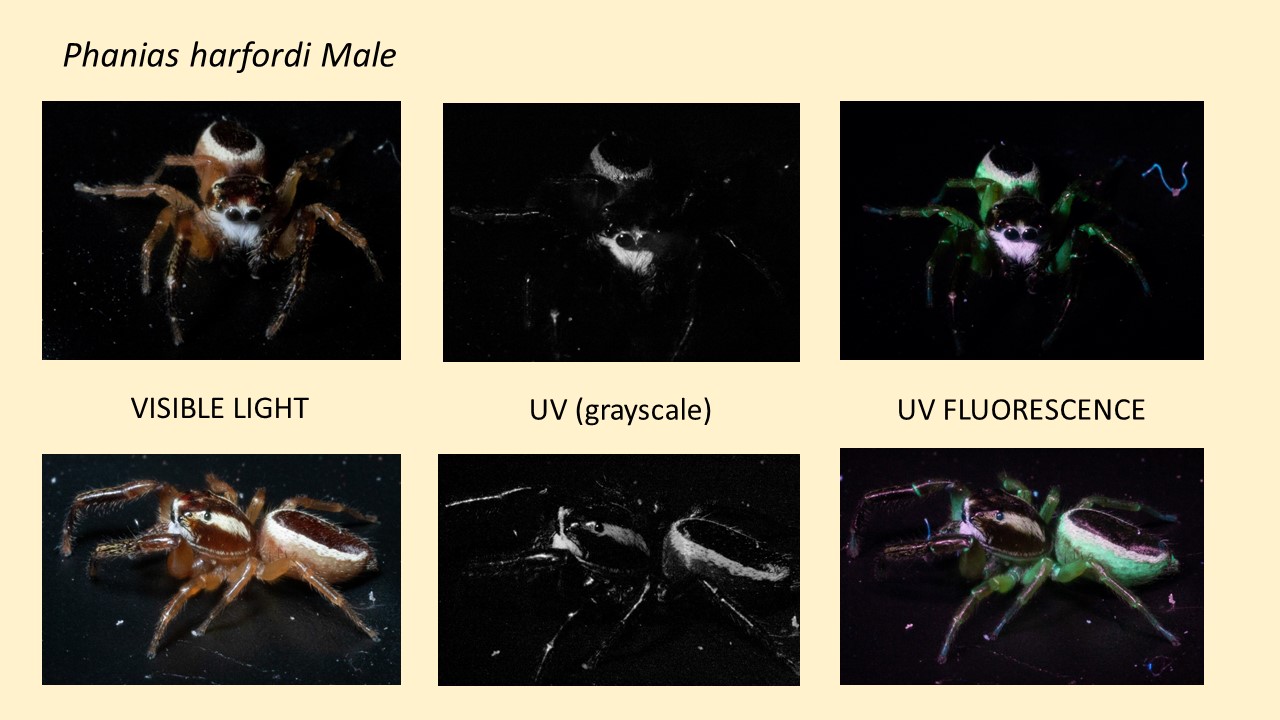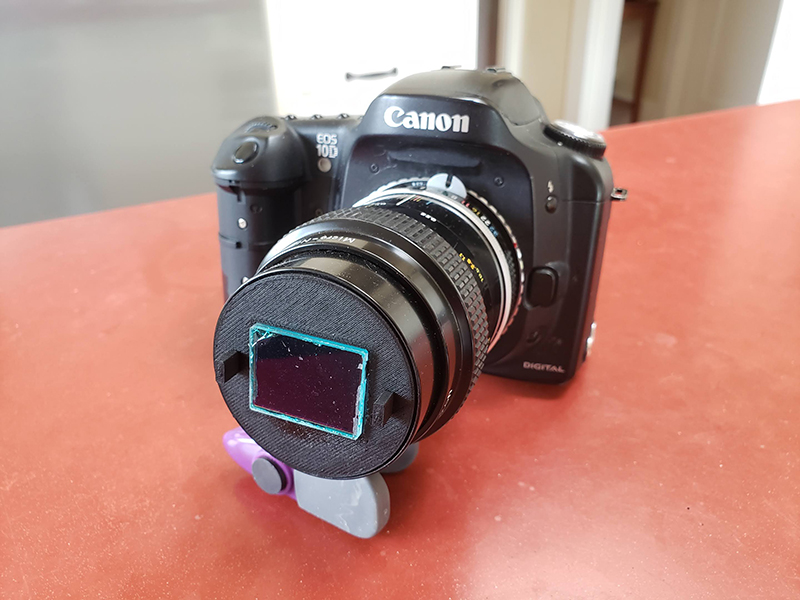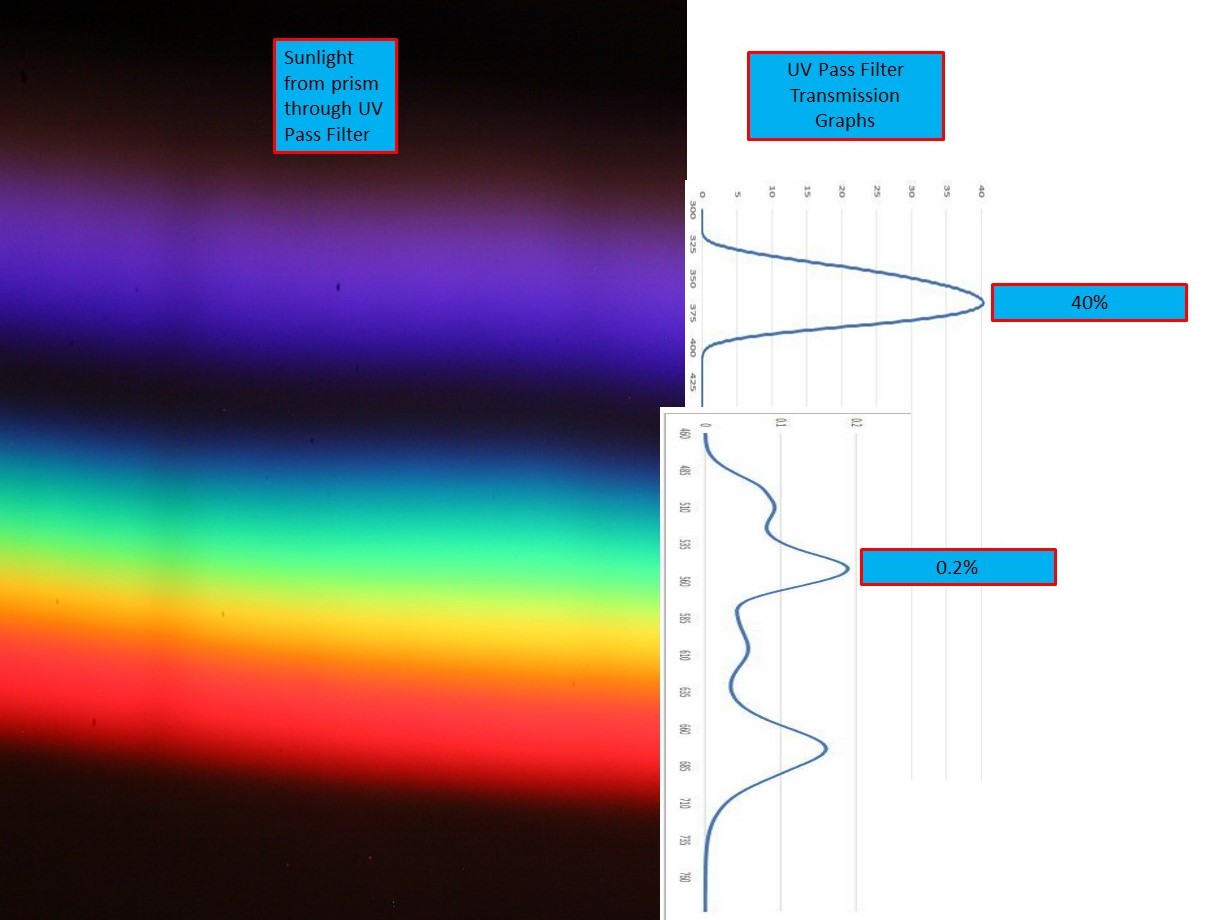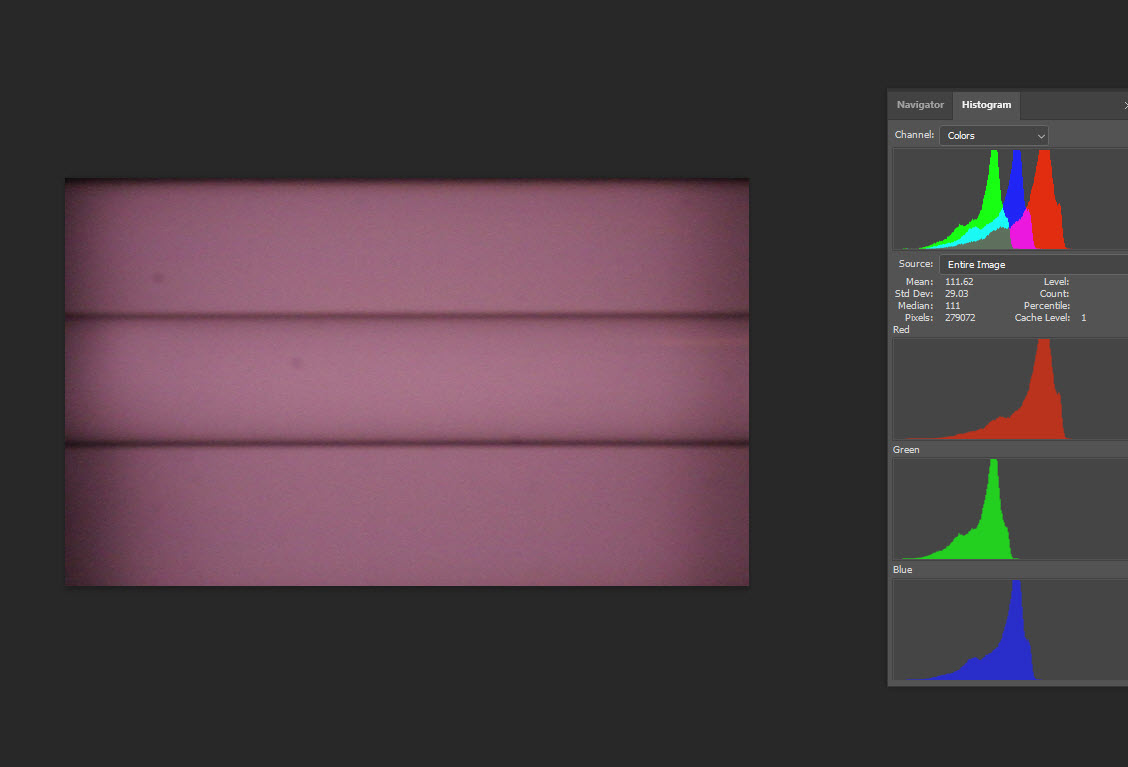Jumping spiders are known to have visual sensitivity to UV light. That means that they can see things that humans cannot see. Earlier this year, I was thinking that they also may have markings that we can’t see. Sure enough, there has been some research done about this on one species from Singapore, Cosmophasis umbratica . So, I thought “Why not try photographing Jumping spiders in UV???”. That took me on a two month journey to obtain the necessary equipment and skill to take such photos. Below are my first results. Read on below if you are curious about how I did it.

What do these images show? Perhaps not surprisingly, they show that the face, which looks bright white to us, is also bright in the UV. More interesting is the fact that, except for some stripes on the side, the rest of the body reflects little UV at all. So, to the UV part of the spider’s vision, the face and those stripes will really stand out.
What about the UV fluorescence? Fluorescence is when light strikes a surface, is altered by a fluorescent chemical, and then re-emitted at a lower wavelength. Many common surfaces are fluorescent; if you’ve every been under a black light, you’ve probably noticed the fluorescence of some clothing, or even peoples’ teeth (because toothpaste has fluorescent brighteners). This Phanias harfordi male clearly has green UV fluorescence on its legs and abdomen. It could be just a random phenomenon, or it could be that the spider uses the fluorescence for communication. Carefully designed behavioral experiments would need to be done to determine which is true.

The stripe on the face that looks bright white to us is also bright in UV. This species has metallic blue-green chelicerae and I was very curious what they would look like in UV. Unfortunately, this female mostly kept her chelicerae hidden. You can see just the tops of them in the image on the left, just below the white stripe, and I don’t see anything unusual about that area in the UV image. I think that the metallic chelicerate are more prominently displayed in the male, so I’m keeping my eyes out for one. Surprisingly, the eyes fluoresce in blue!
How I Did It
When I first searched on UV cameras, I discovered a concept called “camera conversion”, which means turning an ordinary visible light digital camera into one that can also capture near infrared (NIR) and near ultraviolet (UV-A) light. All digital cameras have a filter in front of the sensor that filters out NIR and UV. Remove that filter and you have a “full spectrum” camera. Add a filter that only passes NIR and you can take NIR photos. Add a filter that only passes UV and you can take UV photos.
There are a number of companies that sell converted cameras and will also convert your camera for several hundred dollars. One of these, LifePixel, even has instructions for doing the conversion yourself, along with a disclaimer that you would be much better served by paying them to do it, rather than destroying your own camera. I certainly didn’t want to risk destroying my camera, but I figured that I would try it myself if I could find a cheap enough used camera. Bingo! I bought a Canon 10D DSLR with 6.3 MP, originally released as a semi-professional camera for $1500 in 2003, for $15! I followed these instructions and successfully removed the IR-UV filter in front of the sensor (I was a little rough on the filter, as you can see in the photo below). The subsequent photos show some technical details of how th UV system performs. The result is that my UV photos are not a scientific treatment of Jumping spider UV patterns, because I don’t know exactly which wavelengths of light I am capturing, nor their actual relative intensities (One of the papers on Cosmophasis umbratica used a spectrometer to accurately measure the reflectance of the spiders). However, I think my photos give a general idea of what the spiders look like in UV.

My converted camera with the formerly internal IR-UV filter mounted on the front of the lens. The lens is a 55mm Nikon macro lens from the 1970s.

Sunlight through a glass prism; Left: No filter, Center: IR-UV Filter; Right: UV Pass Filter

Sunlight through a glass prism with the UV Pass filter on the lens. The graph shows the transmittance specification of the filter in two different scales. According to the seller, the filter passes 40% of UV and 0.2% of Green and Red (i.e. 200 times more UV passes through the filter). If that’s true, why are green and red brighter than UV? Either the specifications are wrong, or the overall sensitivity of the camera plus the lens is less then 10%, which is possible. The upshot is that I can’t use this setup to take UV photographs outdoors, only with a UV light source.

This is a photo of a blacklight with the amount of red, green and blue shown at the right. A digital camera has microscopic filters over each pixel that transmit either red, green, or blue light. What this photo shows is the UV light is transmitted by all three filters. The red filter transmits the most and green the least (As you know if you’ve every seen one, a blacklight also emits a little violet light, which would show up in the blue and red channels, I think).
